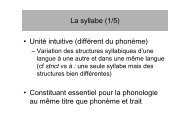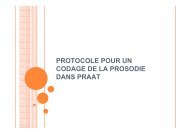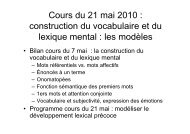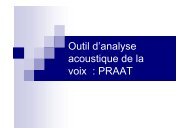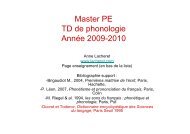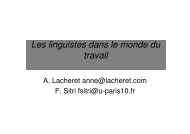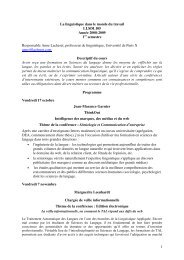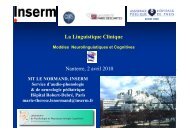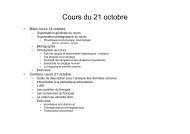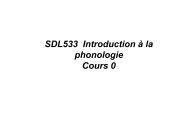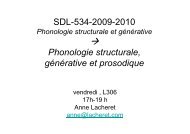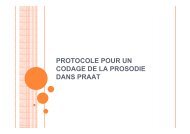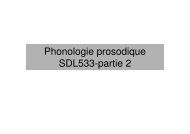You also want an ePaper? Increase the reach of your titles
YUMPU automatically turns print PDFs into web optimized ePapers that Google loves.
Conclusions<br />
The success of the interior voice in its narrative work is due largely to<br />
Ponnelle’s dependence on cinematic point-of-view.With its strong articulation of<br />
observer status, the device as deployed by Ponnelle creates a visual interplay of<br />
persona and character that fills out the multiple agencies implied by the use of the<br />
interior voice. The interior voice would be little more than a cute gimmick without this<br />
expressive visual device.<br />
One way of understanding Ponnelle’s use of interior and exterior singing<br />
comes via another medium, the novel. Ponnelle draws on the novel’s narrative<br />
potential to multiply voices and create personas capable of expression at varied levels<br />
of consciousness, from varied subject positions. The rhetorical stance can shift with<br />
agility from first-person to third-person to direct interaction. The solution eases<br />
tensions between film and theater—film with its impetus toward speed, theater its<br />
predilection for character—by allowing for an enlivened dramatic pace in moments<br />
focused on character. The novelistic mode also overcomes dramatic limitations of<br />
playback and postsynchronization by reveling in the dissonance between what is seen<br />
and heard, and moving us to a realm that Michel Chion calls "en creux"—in the gaps.<br />
These gaps are not the normal places of film, opera, or theater, but they establish new<br />
realms of normalcy in this film.<br />
During the overture Ponnelle hints at literary intentions when he shows us<br />
books by Voltaire and Montesquieu: the written word as key to this filmic<br />
interpretation. Thus Ponnelle restores the literary roots of Figaro. Even thought they<br />
are not its literal roots in a play, the enriched narrative potential in Ponnelle’s filmic<br />
treatment approaches that of Beaumarchais’s talkative play Le mariage de Figaro.<br />
This does not mean Ponnelle slights music in favor of literature. It means a literary<br />
sensibility becomes a feasible way of enacting this opera as film—and this, as we<br />
know, is no mean feat given the divergent tendencies of opera and film.<br />
72



